Support Page Content
Achievements In the CSUS Stem Cell Program, 2016
About Our Stem Cell Graduate Research
Master’s students in our Stem Cell Program perform cutting edge translational research in the field of regenerative medicine. The intention of this site is to provide a platform for our graduate students to describe their research to the greater community. In some cases, students chose instead to write editorials aimed at providing a general understanding of stem cell research. In all cases, students attempted to describe research in a way that would be consumable and informative — and possibly even entertaining —to all readers.
To protect the confidentiality of unpublished research currently underway at UC Davis, the specific names of genes, proteins, cells, and tissue types have often been replaced with aliases or referred to generically (e.g., "factor X" or "a specific peptide"), unless the information is already publicly available elsewhere.
If you have questions or comments, please contact the site editor: Dr. Kimberly Mulligan.
Other Accomplishments
A Cure For Osteoarthritis
Andrew Cicchetto
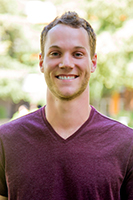
OA is a debilitating disease that causes joint pain brought on by chronic inflammation and cartilage degeneration that worsens with time. You and your loved one have a greater than 1 in 2 chance of being faced with (it) later in life. Something must be done about this devastating, painful disease.
It seems that for such a pervasive disease, surely there would be some medical remedy. Unfortunately, the only treatment options currently available are pain medications or, in more severe cases, surgical replacement of the arthritic joint. However, exciting new research indicates mesenchymal stem cells (MSCs) may be the answer to treating OA. These incredible cells have been termed the paramedics of the body for their ability to modulate the immune system and regenerate damaged tissue, which are two prominent targets of OA.
Could it be that Next Generation MSCs are the answer to one of the world’s most prominent musculoskeletal diseases? We will find out once this technology moves to first-in-human clinical trials. Stay tuned.
Stem Cell Therapy — from your Furry Friends to you!
Kaitlin Clark
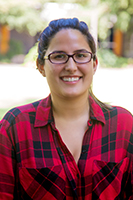
Stem cell therapy has gone to the animals! Did you know that at the UC Davis Veterinary Medicine Teaching Hospital (VMTH) there is currently a clinical regenerative medicine laboratory (RML) that can provide stem cell therapy to your beloved pet? The UC Davis RML is one of the only academic institutions in the nation to provide clinical veterinary stem cell services.
When we combine veterinary and human medicine and work together as a team, we can speed up the pace of research aimed at generating stem cell therapies. This benefits our furry friends, as well as the rest of us. Just imagine, in the next 10 years, you may be able to get stem cells to treat that knee injury that never healed. With veterinary and human scientists working together the possibilities are endless!
Growing Liver Organs to Save Lives
Dane Coleal-Bergum
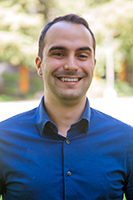
When a car’s brake light goes out, or a bicycle needs a new tire because the old one goes flat, what do you normally do to fix the problem? The answer is pretty straightforward: You get a new part to replace the old defunct one.
But what happens when the component that goes bad is part of a living, breathing system? What if it’s an organ? Unfortunately, unlike the aforementioned examples of bike tires and brake lights, medical technology hasn’t reached the point where we can simply get replacement organs off a shelf at the local parts store to replace old broken ones. Right?
While we are a long way away from having ready-to-go organs available for patients who desperately need them, new research under the guidance of Dr. Ping Zhou at the University of California, Davis comes into play. This research is proof of concept that it might be possible to grow human organs and eliminate the need for donors. This is incredibly exciting as it could mean saving the lives of thousands of people suffering from chronic liver disease, and preventing future suffering.
A Step Closer to Curing Multiple Sclerosis
Christopher Croteau
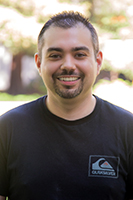
A family member shrieks from across the room and that’s when a loved one realizes their arm has been resting on a hot surface… and according to the burn it must have been there awhile. Normally there would be a quick reaction to move the arm away; however, this individual had no idea their arm was even touching a hot surface, much less resting on it. This is one of the first symptoms of Multiple Sclerosis (M.S.), a debilitating neurodegenerative disorder.
To date (March 2016), there is still no approved treatment to promote the myelination of axons. Understanding myelin synthesis in the central nervous system will be crucial for generating therapies that can successfully remyelinate damaged regions of the brain and spinal cord.
Stem Cell Attachment and the Unpredictable Nature of Science
Hannah Fox
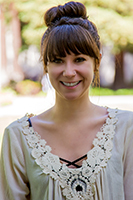
Stem cells naturally transform from an undifferentiated “stem” state into all the cell types that make up the body: heart, brain, bone, skin… you name it! Ongoing research may soon result in stem cell therapies for a diverse group of incurable diseases like diabetes.
Recent studies suggest that specific stem cells, called mesenchymal stem cells, can promote wound healing in diabetic sores. These stem cells have the potential to transform into new skin cells and secrete therapeutic molecules when placed in a diabetic wound. Bringing stem cells to the clinic may permanently save the limbs of nearly 30 million diabetics in the U.S. alone.
A Promising Future: An Alternative to Electronic Pacemakers
Hillary Kao
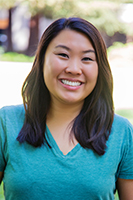
The human heart is a powerful, muscular pump. It contracts continuously to circulate oxygenated blood throughout the entire body. Unlike most organs of the body, the heart is unable to regenerate itself if any of its cells are damaged, which often occurs as a result of cardiovascular diseases.
Cardiovascular disease can also cause arrhythmia, a term used to describe an abnormal heartbeat. Left untreated, arrhythmias can cause fainting, shortness of breath, damage to other organs, stroke, or sudden cardiac arrest. Depending on the severity, doctors may treat such a condition by implanting an electronic pacemaker.
Although current pacemakers work quite well, they also have their limitations.
Scientists working in the field of regenerative medicine are hopeful that their work will relegate pacemakers to ancient medical history. Regenerative medicine involves the use of stem cells to “regenerate” lost or damaged tissues.
Breath of Fresh Air: Regenerative Medicine Brings for New Airways
Josh Martinez

For the many thousands of patients suffering from diseases of the airway, life can be a constant struggle to get enough air. Injury, disease, tumors and developmental abnormalities of the windpipe leave many patients persistently suffocating.
A team of surgeons and biomedical researchers offer a revolutionary alternative: an experimental transplant with a trachea that would be made using a patient’s own stem cells. There is an ever-increasing population of patients in need of transplants and an extremely short supply of donor organs, demonstrating the clinical need for an innovative new solution. Tissue engineering and regenerative medicine is a breath of fresh air for biomedical research, and is poised to revolutionize the way we look at medicine.
Paramedic Activity of MSCs: Tunable Hydrogel for Chronic Wound Treatment
Nora Rimpo
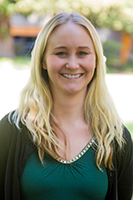
Type II diabetes is a chronic disease that is sweeping our nation like a pandemic, currently affecting 29 million individuals in the U.S. Patients that do not respond to treatment require amputation to prevent death from life-threatening infections. Therapeutic advancements are urgently needed to provide patients with a better quality of life and to decrease the costly burden afflicted on our healthcare system.
The research lab of Dr. Maverakis at the Institute for Regenerative Cures, UC Davis, is developing a treatment option using mesenchymal stem cells (MSCs). This cellular therapy is based on cutting edge research and resembles a fancy cell-based band-aid. The hydrogel we plan to construct will create a mock home for the cells that mimic the body’s environment and allows for the cells to survive and thrive at the site of the wound.
Specific Histone Gene may be a Key Player in Brain Development
Allison Wagner
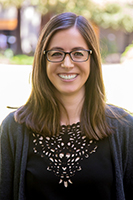
The devastating diagnosis of childhood gliomas accounts for 20% of childhood cancers and affects 100,000 families every year in the United States ("Survival rates for selected childhood brain and spinal cord tumors," 2014). Gliomas are tumors found in the central nervous system that often cause swelling and pressure on the brain. Although aggressive treatment involving surgery, radiation, and chemotherapy is used, the five year survival rate of patients with treatment is only 15-35% (Miller, 2013). Our research is dedicated to finding the causes of gliomas in order to facilitate development of more effective treatments.
Our studies of histone H3.3 are bringing us closer to uncovering how gliomas develop, which is a significant step in the right direction toward finding a cure for this devastating pediatric cancer.
Looking for a Cure to Spina Bifida
Scott Walker
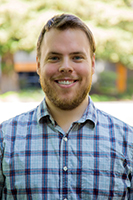
If you’ve ever known a person with Spina Bifida, the words may conjure up images of them unable to walk without the use of metal leg braces or crutches. If this person had a severe form of the disease, you also know about the excess cerebrospinal fluid that can build up until it has to be drained from their head by a shunt.
A cutting edge new surgical treatment seeks to cure this congenital disease before it can inflict any of these horrors. This treatment would use stem cells derived from a baby’s own placenta. (Placenta develops from the same early embryonic cells that the actual embryo does, so they carry the same genetic make-up). The hope is that a baby’s spinal cord could be repaired using the amazing regenerative properties of these cells while the baby is still in the womb.
What is an Induced Pluripotent Stem Cell?
Vanessa Aguilar

How is it that we can see a beautiful morning sunrise, taste a delightful morning cup of coffee, or feel our heart pumping blood through our body during a light jog? The biological answer is: because of our cells! Every thought, smell, taste – in fact, our complete existence — is a result of their intricate network of communication and multifaceted functions.
Once a cell becomes specialized, it usually loses the ability to divide. That means if one is damaged, the remaining cells cannot divide to replace them.
For many tissues, this is where stem cells come into play. Recently, scientists have figured out a way to turn a specialized adult cell into a cell with pluripotent capabilities (Takahashi and Yamanaka, 2006). These incredible cells are called induced pluripotent stem cells (iPSCs) There is now tremendous effort in the field to figure out how to safely and effectively use these amazing cells for all different types of disease.
The Bioethics of Embryonic Stem Cell Research
Clement Aroh
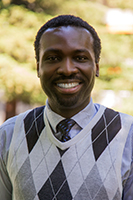
Bioethics is the shared examination and application of ethical guidelines in biological research and medicine. The bioethics of stem cell research has been a center of debate, particularly regarding the use of human embryonic stem cells for regenerative cures. As a scientist working in the field of stem cell research, I view this research as a pursuit for reliable treatment alternatives for diseases that cause unspeakable human suffering. I respect that people have alternative views from mine. Here, I do not aim to change minds, but I would like to provide a framework to help you understand the history and biology of embryonic stem cells, so that you may have an informed opinion — whatever that opinion might be.
As the Italian astronomer, Galileo said, “all truths are easy to understand once they are discovered; the point is to discover them.” When it comes to ethics, we all have our own personal truths. I am thankful that bioethicists work hard to tackle complicated questions that do not have easy answers. Perhaps the most we can hope for is that we as a community educate ourselves so that we may understand the different considerations of bioethical debates. We may not agree, but hopefully all sides are focused on helping people.
Differentiating Embryonic and Induced Pluripotent Stem Cells
Nathan Haigh
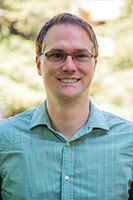
Since the isolation of human embryonic stem cells (hESC) in 1998, stem cell research has gone from being highly controversial to being a source of optimism and promise. What changed? And why does it matter?
The Challenges and Benefits of Using Stem Cells in Psychiatry
Jessica Palka
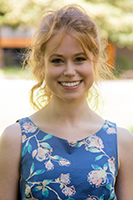
Ongoing research involving stem cell-based interventions for mental illness may have the potential to provide improved treatments or even cures for depression, schizophrenia, and bipolar disorder. In their quest to understand what is going wrong in the brain cells of affected patients, researchers are examining the molecular causes of these disorders to determine if stem cell-based treatments may be used to replenish degenerated brain tissue in patients. The excitement in the field is palpable given the deficit of effective treatments for those suffering with severe mental illness.
As more research is being done in the stem cell field, there is an ever-increasing likelihood that stem cells will be used in the treatment of psychiatric illnesses. Although there are many challenges yet to overcome, the potential benefits of using stem cells to restore proper brain functionality for the millions of people suffering from mental illness offers an incentive that is impossible for the scientific community to ignore.